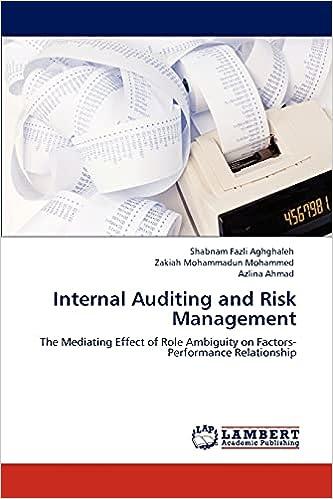Question
a) (8 pts.) The researcher ran the regression again, but this time she left out combined SAT. The estimated coefficient on athlete changed to 0.0054,
 a) (8 pts.) The researcher ran the regression again, but this time she left out combined SAT. The estimated coefficient on athlete changed to 0.0054, with an estimated standard error of approximately 0.0448. What does this new result tell you about the SATs of student athletes compared to non- athletes? Think about the new and the old results, and explain your answer carefully.
a) (8 pts.) The researcher ran the regression again, but this time she left out combined SAT. The estimated coefficient on athlete changed to 0.0054, with an estimated standard error of approximately 0.0448. What does this new result tell you about the SATs of student athletes compared to non- athletes? Think about the new and the old results, and explain your answer carefully.
b) (8 pts.) Refer to the example above. Suppose that, starting from the original regression, the researcher decides to include an additional variable, something totally irrelevant, such as the students shoe size. Yes or no? Would this decision cause the estimators to become biased? Why or why not?
c) (8 pts.) Why is it impossible to use the estimates on the previous page to compare the impact of sports participation on the predicted GPA of female students with the impact of sports participation on the predicted GPA of male students? What variable would you need to add to the regression to be able to do this?
Consider the following model of student GPA, which is measured on as scale of 0 to 4.0. GPA=0+1 (size of high school class) +2 (size of high school class) 2 +3 (academic percentile in high school )+4( combined SAT ) +5 (female) +6( athlete )+. The last two variables are dummies, the first taking on a value of 1 if the student is female (and 0 otherwise) and the second taking on a value of 1 if the student is an athlete (and 0 otherwise). This model was estimated on a sample of 4,137 college students, and produced the following coefficient estimates (estimated standard errors in parentheses): ^0=1.241(0.079)^1=0.569(0.0164)^2=0.00468(0.00225)^3=0.0132(0.0006)^4=0.0165(0.00007)^5=0.155(0.018)^6=0.169(0.042) Consider the following model of student GPA, which is measured on as scale of 0 to 4.0. GPA=0+1 (size of high school class) +2 (size of high school class) 2 +3 (academic percentile in high school )+4( combined SAT ) +5 (female) +6( athlete )+. The last two variables are dummies, the first taking on a value of 1 if the student is female (and 0 otherwise) and the second taking on a value of 1 if the student is an athlete (and 0 otherwise). This model was estimated on a sample of 4,137 college students, and produced the following coefficient estimates (estimated standard errors in parentheses): ^0=1.241(0.079)^1=0.569(0.0164)^2=0.00468(0.00225)^3=0.0132(0.0006)^4=0.0165(0.00007)^5=0.155(0.018)^6=0.169(0.042)Step by Step Solution
There are 3 Steps involved in it
Step: 1

Get Instant Access to Expert-Tailored Solutions
See step-by-step solutions with expert insights and AI powered tools for academic success
Step: 2

Step: 3

Ace Your Homework with AI
Get the answers you need in no time with our AI-driven, step-by-step assistance
Get Started


